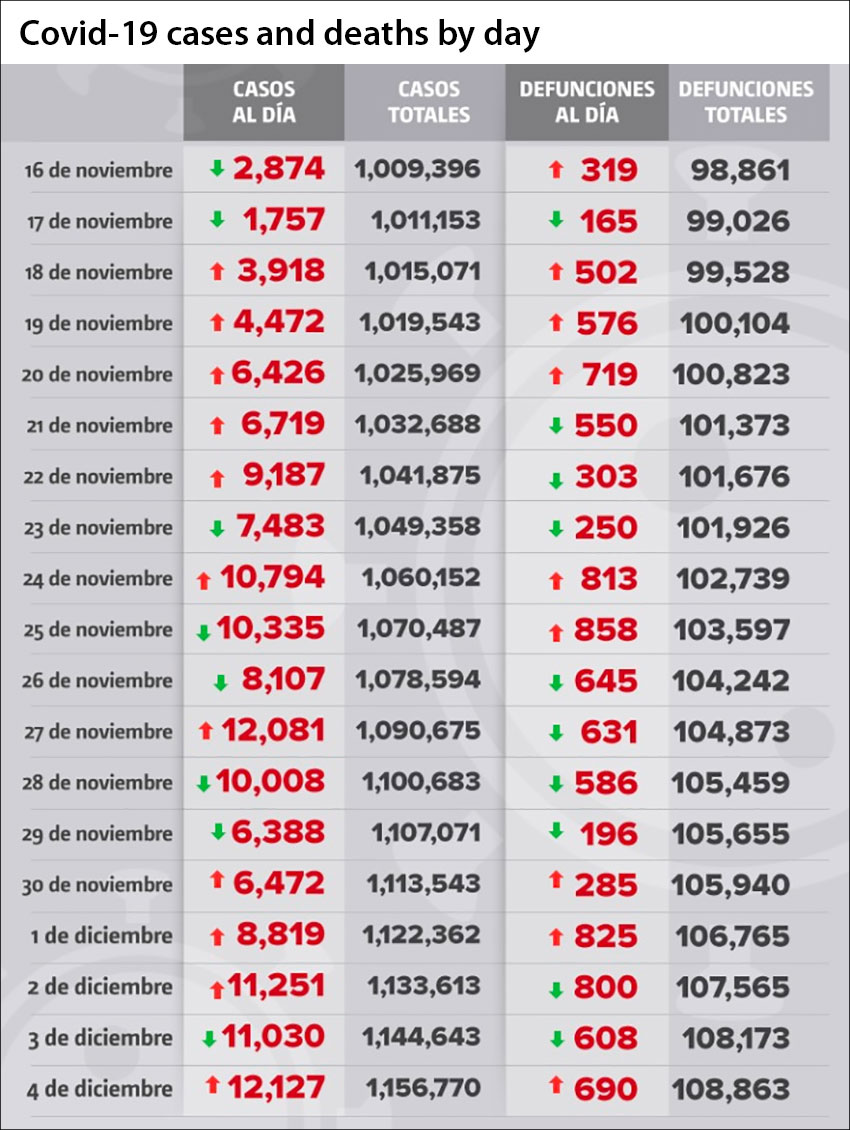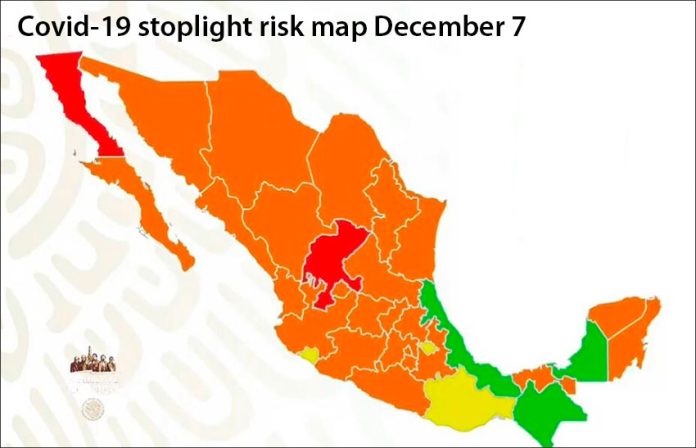Baja California and Zacatecas will regress to red light “maximum” risk on the coronavirus stoplight system while Veracruz will become the third green light “low” risk state, the federal Health Ministry announced Friday as Mexico recorded its highest single-day case tally of the pandemic.
As of Monday, Baja California and Zacatecas will be the only red light states in the country as the two current ones, Chihuahua and Durango, will revert to the orange light “high” risk level.
The government of Zacatecas announced at the start of this week that red light restrictions would take immediate effect due to an increase in coronavirus cases. There are currently more than 5,700 active cases in the state, according to state authorities.
Baja California, a hotspot state early in the pandemic, has recently seen a rise in new infections just as its United States neighbor, California, faces a surge in case numbers. There are currently just under 1,000 active cases in Baja California, according to state government data.
Veracruz, which has the third highest Covid-19 death toll among Mexico’s 32 states with more than 5,800 fatalities, will paradoxically become the third green light state on Monday, joining Campeche and Chiapas. The Gulf coast state has recorded more than 40,000 confirmed cases since the start of the pandemic but only 1% of that number, about 400, are currently considered active.
Twenty-four of Mexico’s states are painted orange on the stoplight map that will take effect Monday while three are yellow, indicating “medium” risk.
Ten states regressed to orange from yellow on the updated map. They are Nayarit, Michoacán, Quintana Roo, Morelos, Puebla, Tabasco, Tamaulipas, Sinaloa, Baja California Sur and Yucatán.
The other orange light states as of Monday will be Chihuahua and Durango, which will switch to that color from red, and Coahuila, Nuevo León, Aguascalientes, Querétaro, Mexico City, Sonora, Guanajuato, Jalisco, México state, Guerrero, Hidalgo and San Luis Potosí, which are already orange and will remain so for another two weeks.
Oaxaca, Colima and Tlaxcala are the three yellow light states on the updated map. All three are already yellow.
Health Ministry spokesman Ricardo Cortés told Friday night’s coronavirus press conference that 10 orange light states – Sonora, Coahuila, Nuevo León, Durango, Aguascalientes, Guanajuato, Querétaro, Hidalgo, México state and Mexico City – are at high risk of regressing to red.
The ministry uses 10 different indicators to determine the stoplight color allocated to each state including the Covid-19 effective reproduction rate (how many people each infected person infects), the weekly positivity rate (the percentage of Covid-19 tests that come back positive) and hospital occupancy levels.

It also recommends coronavirus restrictions for each risk level but several states ease and tighten rules according to their own criteria rather than that of the federal government.
In addition to presenting the updated stoplight map, the Health Ministry reported 12,127 new confirmed cases, a tally that exceeded the previous daily record – set November 27 – by 46. Mexico’s accumulated case tally now stands at 1,156,770.
An additional 690 Covid-19 fatalities were also reported, lifting the official death toll to 108,863.
Almost 40% of the new cases reported Friday – 4,826 – were detected in Mexico City, the country’s coronavirus epicenter since the start of the pandemic
Among the orange light states at risk of turning red, the capital currently faces the most difficult coronavirus situation with more than 16,000 active cases. Mexico City has recorded more than 224,000 confirmed cases and 18,037 Covid-19 deaths since the coronavirus was first detected here in late February. Both figures are easily the highest among the 32 states.
The capital’s health system is coming under increased pressure as case numbers rise and some Covid-designated hospitals are already full.
Mexico City Health Minister Oliva López Arellano said Friday that the situation in the capital is “complex,” warning that there is a risk that case numbers will explode.
“This moment is a moment of risk of very fast … [growth] of the pandemic. Therefore we have to take care,” she said.
Mayor Claudia Sheinbaum said Friday that authorities will once again urge residents of the capital to stay at home and only go out if they really need to.
López highlighted that health workers have been under pressure from the pandemic since early in the year and that fatigue is catching up with them.
“All the health workers are facing a long pandemic but they are very committed,” she said, adding that demand for emergency room services is currently high and that “difficult times are coming because a lot of medical personnel are going to take vacations.”
But low risk states such as Campeche will send brigades of health workers to the capital to support the pandemic response, López said.
The health minister urged residents to avoid gathering with family and friends for traditional end-of-year celebrations, saying that “there will be a time to meet, to have a big celebration” but it’s not now.
